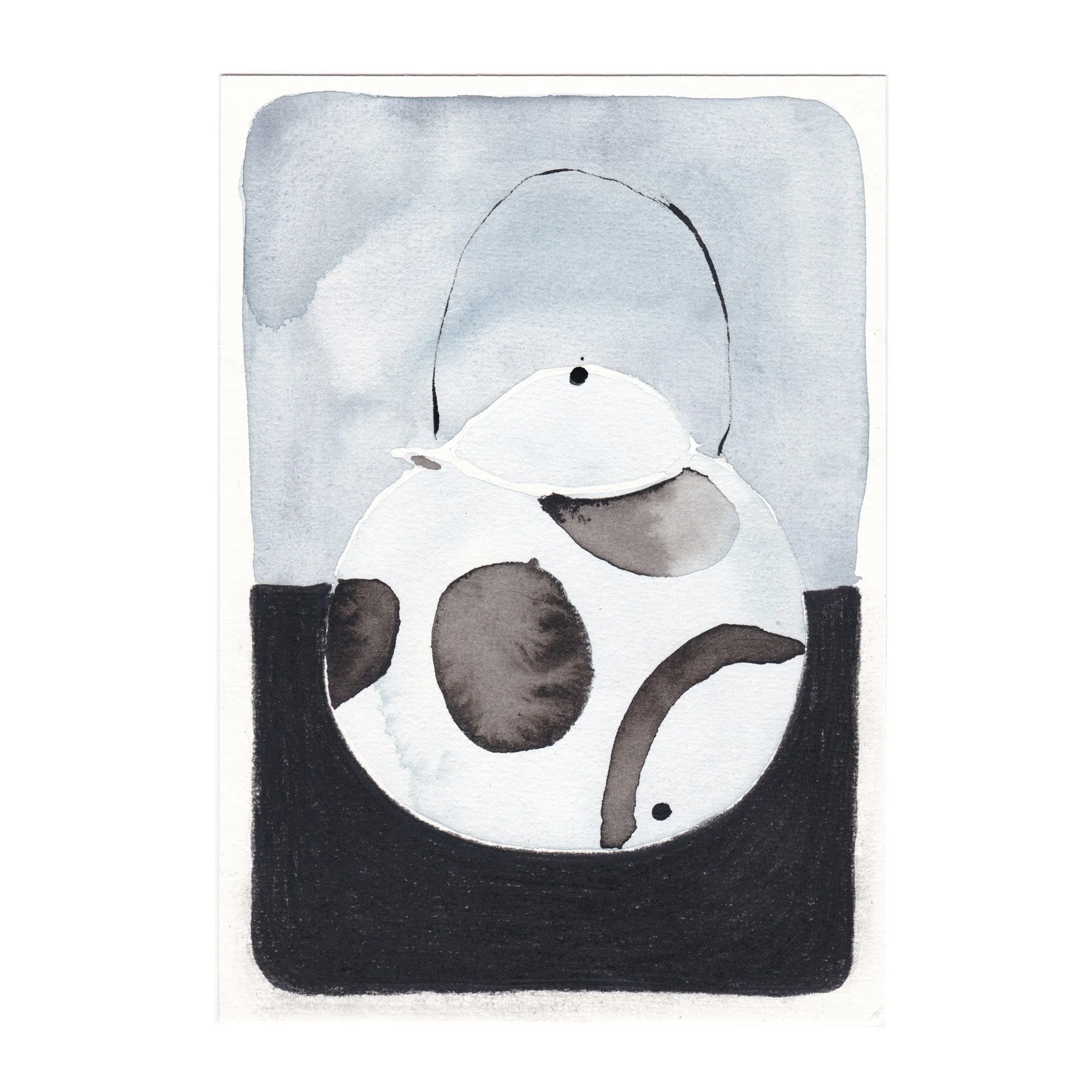Charcoal, ink and watercolor
“Nothing is static or fixed. That all is fleeting and impermanent is the ordinary state of affairs. Everything is in process.”
There is a certain kind of grounding that comes when using charcoal. This year I was more drawn to using it, I completed I think nine pieces, where I used charcoal at the finishing stages. With every stroke, the dust that comes away acts as a tactile reminder of impermanence, that everyday we are using our body, our breath and or life force in a way that is either skillfull, neutral or unskillful. Or perhaps it’s the nostalgia of a childhood memory of using crayons, but the use of charcoal this year for me has been really a rekindling of my own connection to my own life and rhythms.
“Vessel studies - Teapot” A5 (5.8 x 8.3” or 14.8 x 21 cm)
Layering charcoal is a really tactile, beautiful experience, to see the thickness with each layer, increase. I have to use a fixative spray between the layers, but in the ‘Vessel studies’ and ‘Teaware in blue’ works, you can really feel a kind of depth that comes with the layering of charcoal. I’m not sure if I can achieve this with larger works as the physical labour or layering on a piece bigger than A3 would be much harder and would require a lot more patience. On smaller pieces, like A5 and 11x14”, it is a lot easier and I have the patience to do it as it is more meditative than laborious.
“Vessel studies - Teacups” A5 (5.8 x 8.3” or 14.8 x 21 cm)
I used paynes grey watercolor of the backgrounds in these vessel works. Paynes grey is traditionally made of a deep blue like Prussian blue or even ultramarine, then mixed with a raw sienna (a warm earthy brown). I think that’s why a color palette of blue, black and Paynes grey work so well. They implicitly feel connected to natural elements. Raw Sienna has been used for millennia and is from the mineral that gives earthy clay its color.
“Vessel studies - Vase” A5 (5.8 x 8.3” or 14.8 x 21 cm)
I think these three pieces are very quiet works, alive with depth and a kind of steady presence. A little bit like certain seasons in life, where grounding and simplicity is more beneficial and nourishing. This mixed media combination of charcoal, ink and watercolor, is unremarkable yet subtlety powerful as an anchor and reconnection, and maybe that’s what I appreciate most about them.




